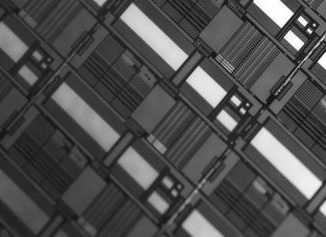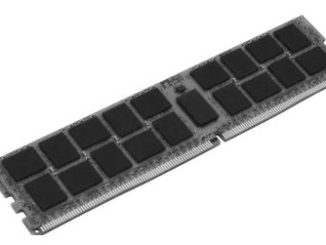
Interest in neuromorphic computing has spurred research into new types of memory devices that can replicate the function of biological neurons and synapse. A recent paper reviewing the current state of the field discusses six of the most promising technologies.
The six types of devices reviewed include resistive random‐access memory (ReRAM), diffusive memristors, phase change memory (PCM), spintronics-based magneto-resistive random‐access memory (MRAM), ferroelectric field-effect transistors (FeFETs), and synaptic transistors. We’ll take them in order.
ReRAM
Based on a “drift” memristor model, ReRAM is a type electronic switch that exhibits non-volatility, i.e., will retain its resistance state even after the voltage is turned off. It can be made made from a number of compounds, the most common ones being oxides of various types. According to the authors, ReRAM’s main advantages is its scalability, CMOS compatibility, low power consumption, and analog conductance modulation, all of which make it a leading contender for next-generation memory.
Its suitability for neuromorphic computing is related to the memristor’s ability to change its state based on the history of voltages applied to it. As a result of this behavior, it has the temporal and analog qualities of biological neurons and synapses. However, making these memristors more uniform so they will operate reliably remains a challenge, say the authors.
As we reported in 2017, a group in the University of Michigan’s Electrical Engineering and Computer Science department led by Wei Lu demonstrated a prototype neuromorphic device using memristors arranged in a crossbar network. Lu is in the process of helping to commercial the technology as the chief scientist of Crossbar, a company he co-founded in 2010 and that is currently working with customers to introduce Crossbar ReRAM solutions to the market.
Diffusive Memristors
Based on a type of memristor that uses diffusive dynamics of active metals, this technology has also drawn the attention of researchers. According to the authors, these memristors are able to emulate synaptic plasticity using their unique conductance behavior, a feature allows them to forget older, short-term information, while locking in more pertinent information.
An experimental device that paired diffusive memristors with ReRAM was able to demonstrate unsupervised learning. That work was led by a team of researchers at the University of Massachusetts, which just so happens to include three of the authors of the paper. As of yet, there are no commercial implementations. Hewlett Packard Enterprise was keen for many years on memristors, particularly for its concept system, called The Machine.
Phase Change Memory
PCM is another high performance, non-volatile memory, in this case, based on chalcogenide glass compounds that change their resistance as they move from one phase to the other. The material’s crystalline phase is one of low resistivity, while the amorphous phase exhibits high resistivity. Phase changes are accomplished by applying or withdrawing an electric current. Unlike conventional non-volatile memory based on NAND, some PCM devices can endure almost an unlimited number of writes.
Intel, Samsung, Micron Technology, and Panasonic have dabbled with PCM at various times, as has IBM Research, which has come up with a PCM DIMM that can serve as a non-volatile cache. Several years back, researchers built a PCI-Express PCM card that can be hooked into a Power8 server and exchange data over the Coherent Accelerator Processor Interconnect (CAPI) interface.
The authors reference a number of research efforts that are using the analog nature of the phase change material for neuromorphic computing, including one effort that proposes a complete neuromorphic circuit design that uses PCM to mimic both neurons and synapses.
Spintronics MRAM
Spintronics-based MRAM, sometimes referred to as spin‐torque transfer MRAM (STT-MRAM) stores data magnetically but uses electrons to read and write it. The magnetic character provides non-volatility, which the electronics provides speed. Some implementations can write data nearly as fast as that of DRAM.
A storage element is comprised of two ferromagnetic layers, consisting of a free layer and a pinned layer, sandwiching a non-magnetic oxide layer. It works by overcoming the resistance required to switch the magnetization from one direction to the other. Multiple resistance states can be achieved by incorporating domain walls in the free layer. The stochastic nature of switching states in these devices can be employed to mimic the stochastic behavior of synapses.
Commercial products of STT-MRAM are being developed at Avalanche Technology, Spin Memory, and Everspin Technologies. Samsung and Intel have also begun to manufacture STT-MRAM chips. From a commercial standpoint, Everspin appears to be the furthest along. This month, the company began shipping 1 Gigabit STT-MRAM devices to customers.
Ferroelectric Field‐Effect Transistors
FeFET memory uses ferroelectric materials that can switch rapidly between two polarized states. Like other technologies mentioned here, it can offer high performance at low power, along with the added advantage of non-volatility.
According to the authors the voltages for this type of memory can be tuned in such a way as to emulate synaptic weight, an important element of neuromorphic computation. One big advantage of FeFET is that some ferroelectric compounds are also CMOS-compatible, making it easier to integrate into standard computing platforms. The downside is that the technology also suffers some of the limitations as DRAM, including scaling, leakage, and reliability.
Synaptic Transistors
Unlike the other technologies mentioned here, synaptic transistors are specifically designed to simulate the behavior of neurons. A transistor is three-terminal structure comprised of a gate, source and drain. The gate uses conductance to deliver the synaptic weight to a channel, while the source and drain terminals are used to read that weight. An electrolyte solution is used to modulate the channel’s conductance, providing the analog behavior central to neuromorphic function.
The authors say synaptic transistors transistors offer “great performance,” potentially even better than that of their biological equivalents. However, this technology is still very much in the early research stage. Current implementations are limited in endurance, speed, and electrolyte. Plus, they have never been demonstrated to work coherently as a neural network.
Overall, these technologies have the potential to “significantly accelerate computing speed while reducing power consumption,” write the authors, who also admit that each has its own specific strengths and weaknesses. They believe any artificial neuromorphic systems will still have to rely on CMOS circuitry for peripheral components, at least for the foreseeable future. “To make the neuromorphic system self‐reliant these new device technologies must improve by leaps and bounds,” the authors write. “There still exist areas for continued development, thus moving forward with a strong collaboration among material scientists, device engineers, hardware designers, computer architects, and programmers will help to facilitate the cross‐disciplinary dialogue to solve many challenges being faced by neuromorphic community.”





Be the first to comment